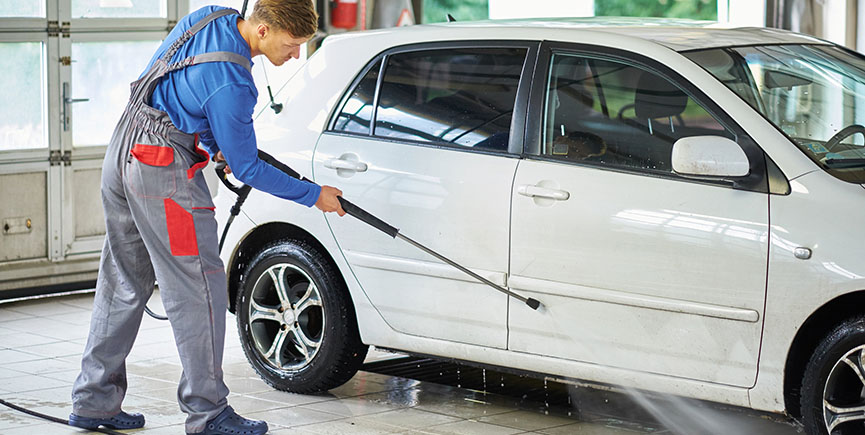Paint Protection Film Maintenance

Paint Protection Film Maintenance
The desire to safeguard the paint of their vehicles is shared among all car enthusiasts, who strive to maintain its pristine appearance for as long as possible. While various methods like waxes and coatings have been experimented with, none have garnered as much favor as the paint protection film. This cutting-edge technique is not only the latest, but also one of the most effective ways to keep the car’s paint looking brand new. However, it is worth noting that maintaining the paint protection film itself is equally important, as neglect can lead to premature deterioration of the protective layer.
Strategies for Maintaining Paint Protection Film
Proper maintenance of the newly installed paint protection film is vital, and fortunately, it is not a complicated task. It simply requires following a few simple care methods. In this article, we will explore effective ways to maintain your paint protection film and extend its lifespan.
Avoid Touching the Film During the Initial Week
It is crucial to refrain from touching the paint protection film for the first week following installation. Allowing the paint to settle beneath the film is essential for proper adhesion over time. Any contact with the film during this period can damage the adhesive, leading to premature peeling. Therefore, it is advisable to avoid leaning against or brushing against the car during this initial week.
Prevent Pressure on Bubbles Formed Under the Film
During the installation process, bubbles may appear under the paint protection film due to residual moisture. However, it is crucial not to apply pressure or puncture these bubbles. Doing so can result in peeling or cracking of the film, leaving the car’s paint vulnerable to damage. The best approach is to let the bubbles naturally disappear, ensuring that the paint protection film remains intact.
Refrain from Washing the Car in the First Week
It is essential to abstain from washing the car within the first week after the installation of the paint protection film. Washing can cause moisture to accumulate beneath the film, leading to premature peeling. To ensure optimal adhesion, it is recommended to park the car in a covered area or garage during this initial week.
Dealing with Contaminants on the Paint Protection Film
Despite regular maintenance, contaminants such as dirt and bird droppings can find their way onto the paint protection film. Swift removal is crucial to prevent stains and potential damage to the film. To address these issues, use a gentle cleaning solution and a microfiber towel to wipe away any dirt or debris. In the case of bird droppings, place a damp cloth on the affected area for a few minutes before gently wiping it away. It is important to avoid using harsh chemicals or abrasive materials that could harm the film.
Exercise Caution While Washing the Car
Although it is impossible to avoid washing your car indefinitely, it is essential to exercise caution when doing so. Begin by rinsing the car with clean water to eliminate any dirt or debris that may scratch the paint protection film. Ensure that the water pressure is not too high. Next, wash the car using a high-quality, yet gentle, car shampoo. After washing, use a microfiber towel to dry the car thoroughly, preventing water spots. Finally, consider applying a high-quality sealant to the paint protection film to provide an additional layer of protection against the sun, dirt, and debris.
Furthermore, it is advisable to reduce the frequency of car washes compared to before the application of the paint protection film.
Addressing Scratches on the Paint Protection Film
While paint protection film is known for its durability, it can still accumulate scratches or chips over time. Minor scratches can be addressed using a specialized polishing compound designed for paint protection film. However, for more significant repairs or replacements, it is recommended to consult professional paint protection film installers who possess the expertise to ensure proper installation. Attempting DIY repairs in such cases can potentially cause more harm than good, making it prudent to entrust significant damage to a professional auto tint shop Springfield.
Avoiding Activities That Can Damage the Film
Although paint protection film is robust, certain activities can put it at risk of damage, such as off-roading or driving on gravel roads. To minimize or prevent damage, consider avoiding these activities whenever possible. Driving at a slower speed can also reduce the risk of debris hitting the film. Additionally, applying a protective film to vulnerable areas such as headlights and side mirrors can offer an extra layer of defense against potential damage.
Eliminating Stubborn Stains
Occasionally, the paint protection film may encounter more persistent stains, such as tar, sap, or grease. It is crucial to clean these stains using specialized products and techniques to prevent harm to the film. Start by saturating a microfiber towel with a gentle solvent like isopropyl alcohol, then gently rub the stain in a circular motion. Avoid using abrasive materials or products containing chemicals, as they can scratch or discolor the film. Once the stain is removed, rinse the area with water and dry it with a clean microfiber towel.
Tips for Storing a Car with Paint Protection Film
If you plan to store your car for an extended period, it is essential to take precautions to protect the paint protection film and ensure its longevity. Begin by thoroughly cleaning the car, including the film, before storing it. Use a breathable car cover to shield the vehicle from dust and debris while allowing moisture to escape. Avoid storing the car in direct sunlight or extreme temperatures, as they can damage the film. Ideally, choose a cool and dry place for storage.
Choosing a High-Quality Paint Protection Film
Selecting a high-quality paint protection film is paramount to ensure the longevity and effectiveness of your car’s paint. Look for films that are sufficiently thick to provide adequate protection against chips and scratches. Consider opting for a film with self-healing properties, allowing it to repair small scratches and chips automatically. Lastly, entrust the installation of the film to professional paint protection film installers with extensive experience.
Conclusion
Maintaining your car’s paint protection film is crucial for preserving its longevity and effectiveness. By implementing regular maintenance practices and avoiding activities that could harm the film, you can keep it in optimal condition. Additionally, selecting a high-quality film and relying on a trusted protective car film shop Springfield for installation is essential. Remain vigilant about the film’s condition and address any issues promptly to prevent further damage. With these invaluable tips and best practices, you can enjoy the allure of a beautifully protected car that turns heads on the road.

